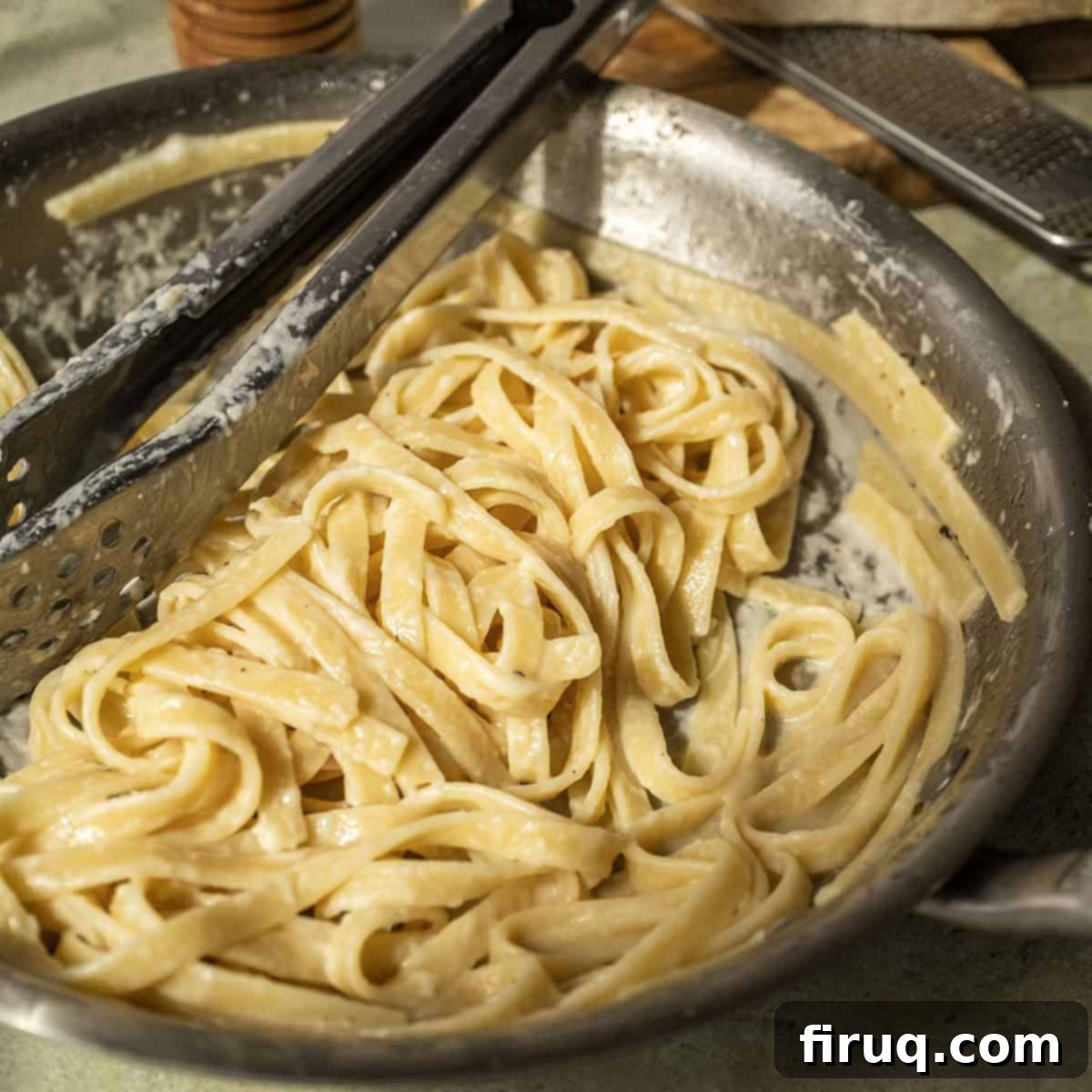Authentic Fettuccine Alfredo: The Ultimate No-Cream Recipe for Silky Pasta Perfection
Prepare to experience a truly **Authentic Fettuccine Alfredo** – one that boasts incredible flavor without a single drop of heavy cream! This iconic dish, celebrated for its simplicity and exquisite taste, comes together with just **5 essential ingredients** and in a remarkable *under 20 minutes*. The result is a perfect silky, unbelievably creamy pasta that will undoubtedly become a cherished favorite in your family’s meal rotation. Forget everything you thought you knew about Alfredo; this is the classic, time-honored Italian way, delivering a richness and depth that industrial cream-laden versions simply cannot match. It’s a testament to how humble ingredients, combined with the right technique, can create culinary magic.
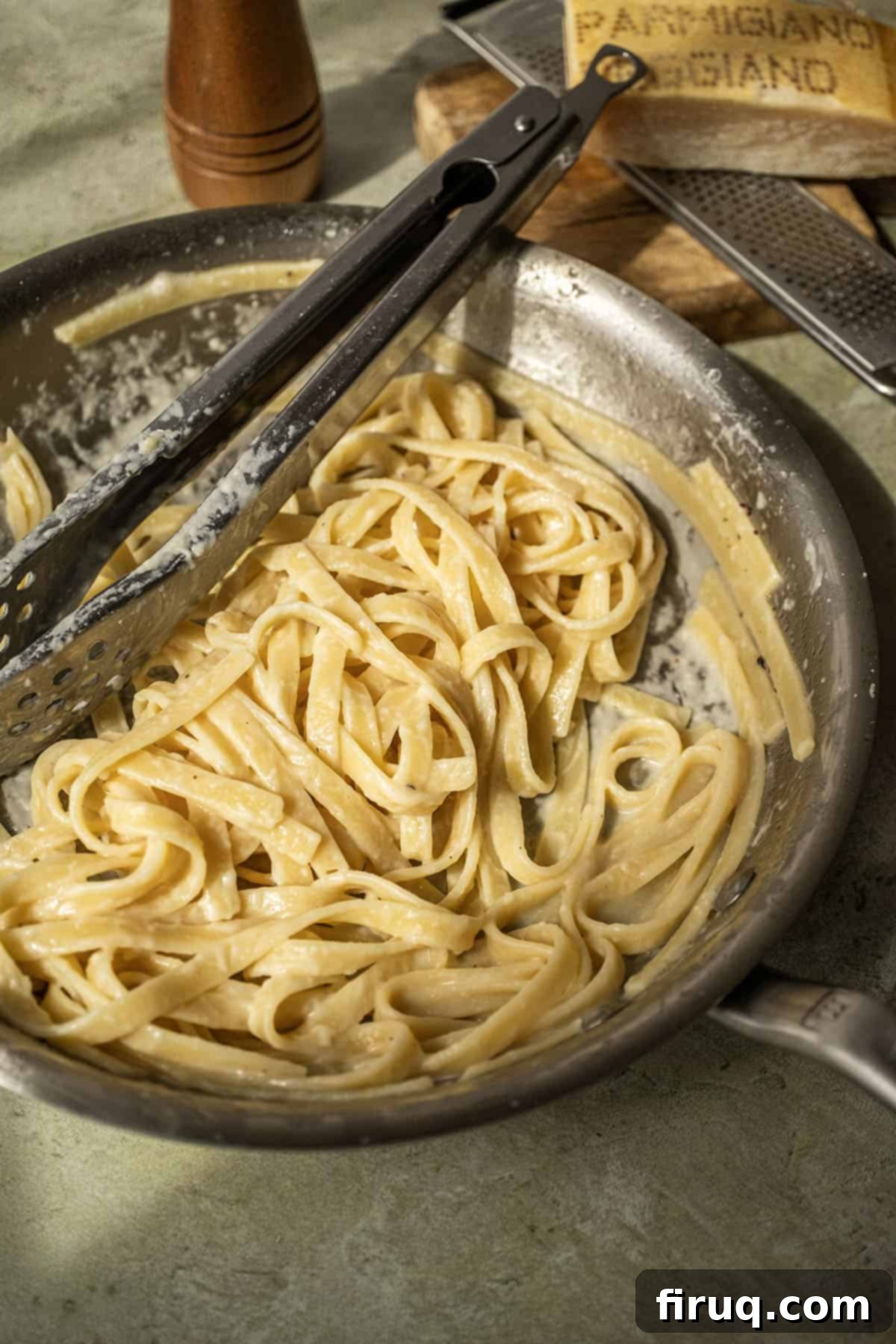
Craving more incredible, authentic Italian dishes that taste like Nonna made them? Don’t miss our meticulously prepared Authentic Italian Braciole or our definitive guide to creating the perfect Roman classic, Spaghetti Carbonara! These recipes will transport your taste buds straight to Italy with every bite.
What Makes Alfredo Sauce Truly Authentic?
The secret to *truly* classic and **authentic Italian meals** lies in the profound **simplicity of their ingredients** and the mastery of technique. When it comes to Alfredo sauce, this principle couldn’t be more evident. Many popular versions outside of Italy incorrectly feature heavy cream, but an authentic Alfredo sauce, known in Italy as “Fettuccine al Burro” (fettuccine with butter), is made with just a handful of high-quality components: butter, Parmigiano-Reggiano cheese, a touch of salt, freshly cracked black pepper, and crucially, starchy pasta water. This minimalist approach allows the natural flavors to shine and creates an unparalleled creamy texture through emulsion, not added fat.
The origins of this beloved pasta dish trace back to Alfredo di Lelio in Rome, who created it in the early 20th century. His intention was to craft a rich, comforting meal for his wife, using ingredients readily available and focusing on a technique that would bind them perfectly. Unlike modern interpretations, his original recipe never included heavy cream. The magic happens when the butter, finely grated Parmigiano-Reggiano, and the starchy water from cooking the fettuccine are skillfully combined. The starches in the pasta water emulsify with the butter and melted cheese, forming a luscious, velvety sauce that clings beautifully to every strand of pasta.
This technique-driven approach is a hallmark of classic Roman pasta dishes. Think of other iconic recipes like **Pasta Alla Gricia** or **Bucatini Amatriciana**, where precision in timing and combining ingredients is paramount to achieving the desired texture and flavor. While simply adding a bunch of cream might seem like an “easy fix” to create a thick sauce, it completely bypasses the nuanced alchemy of traditional Alfredo, resulting in a heavier, often greasier dish that loses its delicate balance and can, as some might humorously lament, “ruin your day with a lot of time spent in the restroom” due to its richness.
For me, there’s an undeniable elegance and superior taste in a dish crafted with such thoughtful simplicity. The authentic version offers a sublime richness that feels light yet incredibly satisfying, allowing the quality of each ingredient to sing. This genuine Fettuccine Alfredo pairs beautifully with Crispy Italian Chicken Cutlets for a hearty main or alongside some fresh Sauteed Rapini with Garlic for a wonderfully balanced and utterly delicious meal – truly one of my all-time favorite combinations!
Ingredient Notes and Essential Substitutions
Crafting the perfect Authentic Fettuccine Alfredo means paying close attention to the quality and specific characteristics of each ingredient. While the list is short, each component plays a crucial role in achieving that sought-after silky, creamy texture and profound flavor. Here’s a closer look at what you’ll need and why:
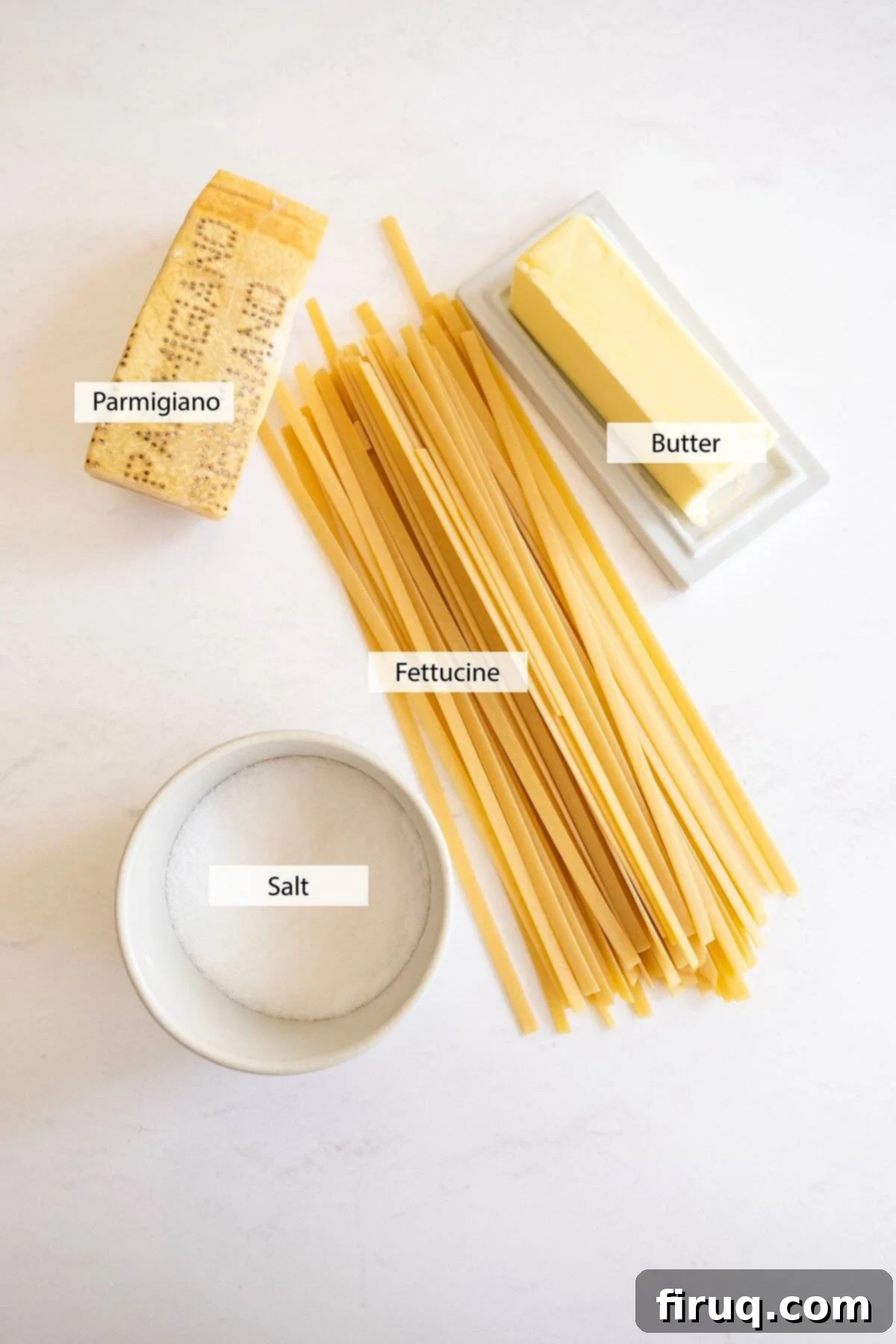
- Fettuccine. The traditional choice for Alfredo, fettuccine’s flat, wide shape is ideal for cradling the rich sauce. Opt for a high-quality, bronze-cut fettuccine if possible. Bronze-die pasta has a rougher, more porous surface, which allows the sauce to adhere much better than smoother, Teflon-extruded pasta. You can often identify bronze-cut pasta by its slightly starchier, matte appearance. This texture is essential for the sauce to truly “grip” the pasta, ensuring every bite is coated evenly.
- Unsalted Butter. Using unsalted butter is crucial as it gives you complete control over the seasoning of your dish. Different brands of butter can vary in salt content, and the Parmigiano-Reggiano itself is quite salty. By starting with unsalted butter, you can adjust the salt level precisely to your liking, ensuring a perfectly balanced flavor profile. Good quality butter also contributes significantly to the richness and depth of the sauce.
- Parmigiano-Reggiano Cheese. This is non-negotiable for authentic Alfredo. It’s *always* best to use freshly grated Parmigiano-Reggiano from a block. Pre-grated cheeses, while convenient, often contain anti-caking agents like cellulose powder. These agents can prevent the cheese from melting smoothly into the sauce, leading to a clumpy or grainy texture. The authentic Parmigiano-Reggiano, with its rich, nutty, and salty flavor, is what truly defines the sauce and helps create that beautiful emulsion.
- Salt and Freshly Cracked Black Pepper. While only salt is explicitly shown in the image, freshly cracked black pepper is an absolute must-have ingredient in this authentic dish, and arguably my favorite flavor addition. Salt brings out the natural flavors of the butter and cheese, while the pepper adds a delightful warmth and subtle pungency that cuts through the richness, elevating the entire experience. Don’t underestimate the power of freshly ground pepper here; it makes a world of difference compared to pre-ground versions.
*Please refer to the detailed recipe card below for precise measurements and additional notes on these essential ingredients.
How to Make Traditional Fettuccine Alfredo: A Step-by-Step Guide
Creating a truly authentic Fettuccine Alfredo is less about a complex list of ingredients and more about mastering a simple, elegant technique. Follow these steps carefully to achieve a rich, creamy, and utterly delicious dish without any cream. The key is in the timing and the gentle emulsification of the butter, cheese, and starchy pasta water.
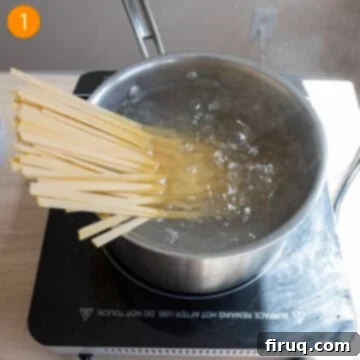
Step 1: Begin by boiling a large pot of heavily salted water. It should taste like the sea! Once boiling, add your fettuccine and cook it to a perfect *al dente* – firm to the bite, not mushy. This is crucial for the final texture of your dish. Before draining, make sure to reserve at least 1 to 2 cups of this starchy pasta water; it’s the secret ingredient for your sauce.
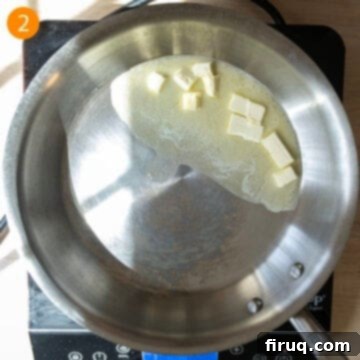
Step 2: While the pasta is cooking, bring a large, shallow saucepan or skillet to medium heat. Add the unsalted butter to the pan and allow it to melt completely. Swirl the pan occasionally to ensure even melting without browning. The goal is to have beautifully liquid butter ready to merge with the other elements.
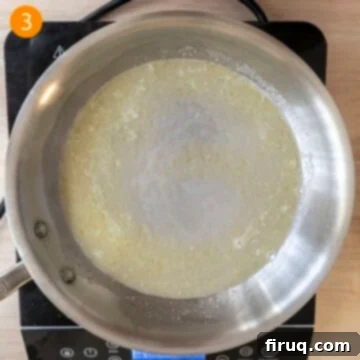
Step 3: Once the butter is fully melted, add about 1 cup of the reserved, starchy pasta water to the pan. Stir or whisk gently to combine the butter and water. This creates the foundational liquid for your sauce, and the starches in the water are crucial for the upcoming emulsification with the cheese.
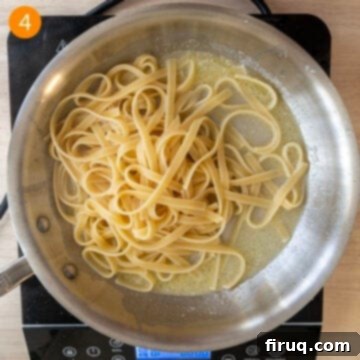
Step 4: Immediately transfer the al dente pasta directly into the saucepan with the butter and pasta water. Using tongs, toss the pasta vigorously and continuously. As you toss, the sauce will begin to emulsify and thicken, coating the pasta in a luscious sheen. The starch from the pasta, combined with the butter and pasta water, creates the magic. Keep extra pasta water close by; you’ll need it to adjust the consistency later.
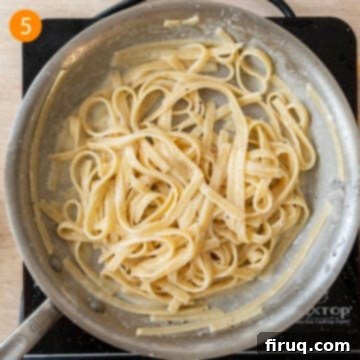
Step 5: This is a critical step! Remove the pan completely from the heat. Gradually add the freshly grated Parmigiano-Reggiano cheese, a little at a time, while continuously stirring and tossing the pasta. The residual heat from the pasta and the pan will gently melt the cheese, creating a smooth, cohesive sauce. Adding the cheese off the heat prevents it from clumping or becoming stringy (“pilling”). Continue stirring until the cheese is thoroughly combined and the sauce is beautifully emulsified.
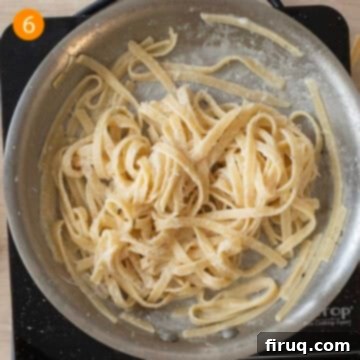
Step 6: Continue to toss and stir the pasta, adding a tablespoon or two of the reserved pasta water as needed to achieve your desired creamy consistency. If the sauce becomes too thick or begins to look dry, a little more pasta water will bring it back to life and make it wonderfully silky. Season with additional salt and plenty of freshly cracked black pepper to taste. Serve immediately, as authentic Alfredo is best enjoyed fresh off the stove!
To complete this delightful meal, consider serving your freshly made Fettuccine Alfredo with some tender Cast Iron Chicken Breast or juicy Cast Iron Boneless Pork Chops. Pair it with a vibrant vegetable side like Garlic Parmesan Green Beans for a well-rounded and incredibly satisfying dinner that truly embodies Italian comfort food!
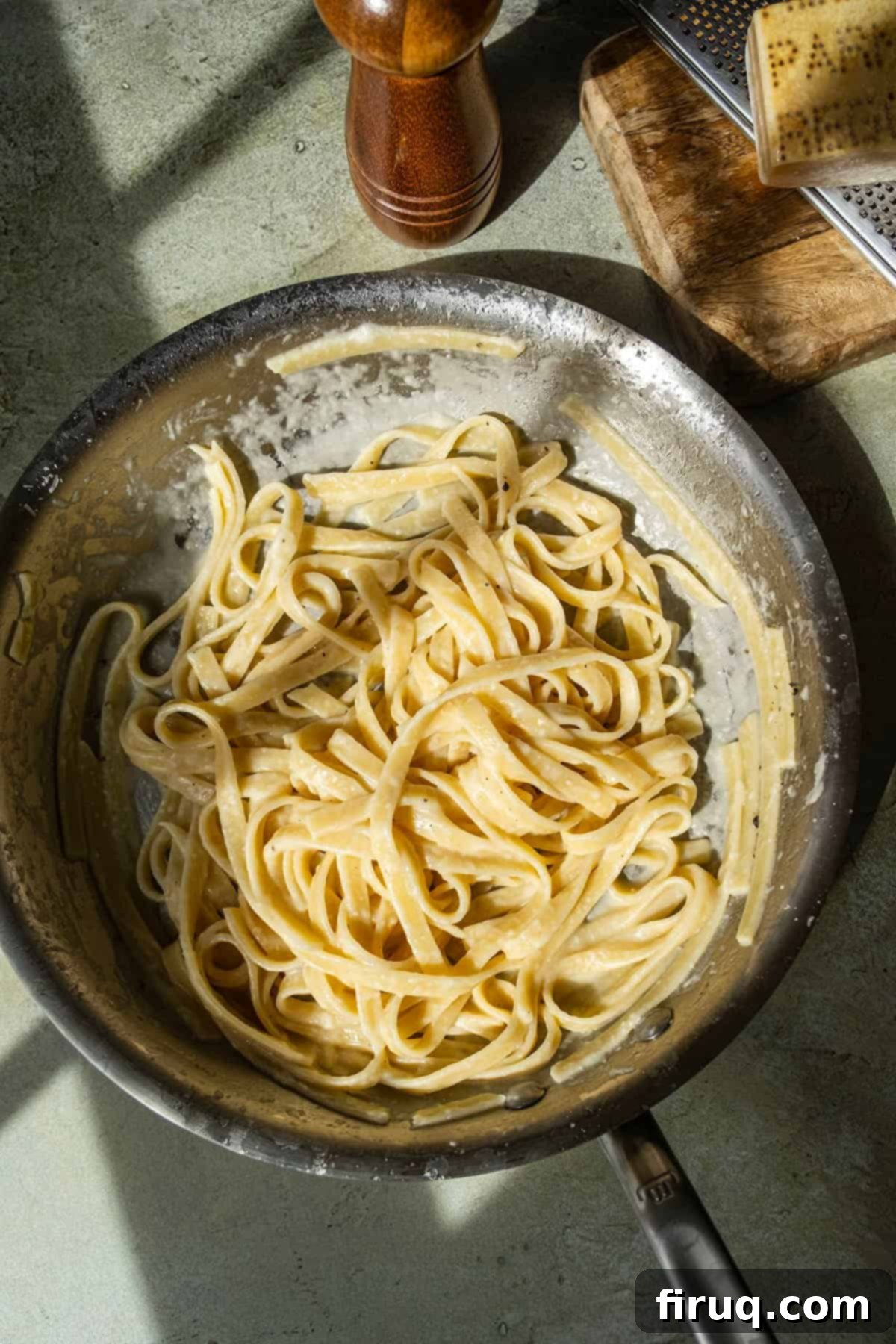
Pro-Tips for Perfect Fettuccine Alfredo Every Time
Achieving that restaurant-quality, silky Alfredo sauce is easier than you think when you keep these crucial tips in mind. These insights will elevate your dish from good to absolutely unforgettable:
- Starchy pasta water is your best friend. This cannot be stressed enough! The cloudy, starchy water left over from boiling your pasta is the absolute key to creating an authentic, creamy emulsion without any added cream. The starches in the water help to bind the fat from the butter and the proteins from the cheese, creating a smooth, velvety sauce. Always remember to reserve at least 1-2 cups of it before draining your pasta. Don’t be shy about using it liberally to achieve your desired consistency.
- Remove the pan from the heat when adding Parmigiano-Reggiano cheese. This is perhaps the most critical step to prevent your cheese from clumping or “pilling” into small, rubbery balls. If the pan is too hot, the cheese will seize and separate instead of melting smoothly into the sauce. The residual heat from the pasta and the pan is perfectly sufficient to melt the finely grated Parmigiano-Reggiano gently and beautifully. Work quickly but calmly.
- Toss and stir the pasta quickly and continuously. As soon as the pasta is added to the butter and pasta water mixture, and especially when you add the cheese, it’s vital to keep it moving. Constant tossing and stirring help to create and maintain the emulsion, ensuring the sauce coats every piece of pasta evenly. If you notice the sauce getting too thick, dry, or starting to stick to the pan, immediately add another splash of that precious pasta water and continue to toss until it reaches the desired, luxurious creaminess.
Mastering these simple techniques will guarantee a flawless, authentic Fettuccine Alfredo that will impress even the most discerning palates.
Common Questions About Authentic Fettuccine Alfredo
You’ve got questions about this classic Italian dish, and we’ve got answers! Delve into the most frequently asked questions to truly understand the nuances of authentic Fettuccine Alfredo.
Authentic Alfredo sauce, or “Fettuccine al Burro” as it’s known in Italy, is surprisingly simple. It’s traditionally made with just a few core ingredients: high-quality unsalted butter, freshly grated Parmigiano-Reggiano cheese, a touch of salt, freshly cracked black pepper, and most importantly, the starchy water left over from cooking the pasta. These simple ingredients are carefully combined using a specific technique to create a naturally creamy, emulsified sauce without any heavy cream or other dairy products.
This common issue, known as “pilling,” occurs when the cheese doesn’t melt smoothly. There are a few primary reasons this can happen: 1) The pan was too hot when you added the cheese. High heat causes the cheese proteins to seize and clump. Always remove the pan from the heat before incorporating the Parmigiano. 2) You added too much cheese at once, overwhelming the emulsifying liquid. Add it gradually, stirring constantly. 3) You used pre-grated cheese. These often contain anti-caking agents (like cellulose) and preservatives that prevent them from melting properly and can lead to a grainy or lumpy sauce. Always grate fresh Parmigiano-Reggiano from a block for the best results.
Yes, absolutely! However, it’s typically known by its original name: “Fettuccine al Burro” (fettuccine with butter). While the dish gained significant popularity in America, often with the addition of cream, the foundational recipe of butter and Parmigiano-Reggiano emulsified with pasta water is a true Roman classic. So, if you’re looking for it in Italy, ask for “Fettuccine al Burro” or simply “pasta al burro” and you’ll get the authentic, no-cream version.
While adding chicken or other proteins is not part of the traditional or authentic Fettuccine Alfredo recipe (which focuses solely on the pasta and sauce), you certainly *can* customize your meal to your liking. If you wish to include protein like grilled chicken, shrimp, or even pancetta, I recommend cooking them separately. There’s no reason to combine them directly into the pasta pan during the sauce creation process, as this can interfere with the delicate emulsification. Simply prepare your preferred protein and serve it alongside or on top of the finished Alfredo.
Explore More Traditional Italian Recipes
If you’ve fallen in love with the authentic flavors of this no-cream Fettuccine Alfredo, you’re in for a treat! Our kitchen is dedicated to bringing you the genuine tastes of Italy, from hearty Sunday meals to quick weeknight delights. Dive into these other traditional Italian recipes that are sure to impress and satisfy.
- Pasta alla Norma (A Sicilian Dish)
- Authentic Italian Sunday Sauce
- Garlic Anchovy Pasta with Toasted Breadcrumbs
- Classic Pork Chop Milanese
We hope you enjoy these culinary journeys! Please leave a comment and a star rating below in the recipe card if you try this or any of our recipes. Your feedback means the world to us. And don’t forget to tag us on Instagram @vindelgiudice – we love seeing your delicious creations!
📖 Recipe
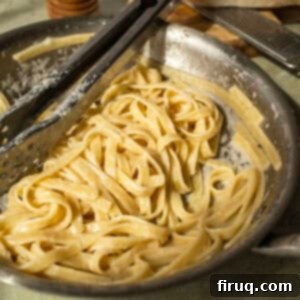
Authentic Fettuccine Alfredo
Vincent DelGiudice
Pin Recipe
Equipment
-
1 large saucepan
-
1 large pot
Ingredients
- ½ cup unsalted butter
- 1 lb fettuccine (preferably bronze-cut)
- 1 teaspoon salt (or to taste, for pasta water and sauce)
- ½ teaspoon freshly cracked black pepper (or more to taste)
- 1 cup freshly grated Parmigiano-Reggiano cheese (from a block)
- Reserved Pasta Water
Instructions
-
Bring a large pot of heavily salted water to a rolling boil. Add the fettuccine and cook until it is al dente (firm to the bite). Before draining, remember to reserve at least 1 to 2 cups of the starchy pasta water.
-
In a large, shallow saucepan or skillet, melt the unsalted butter over medium heat until completely liquid.
-
Add 1 cup of the reserved starchy pasta water to the pan with the melted butter. Stir or whisk to combine them into a uniform liquid base.
-
Immediately transfer the al dente pasta from its pot directly into the saucepan with the butter and pasta water. Using tongs, toss the pasta vigorously and continuously. The sauce should begin to thicken and coat the pasta as it emulsifies. Keep the remaining reserved pasta water on hand.
-
Remove the pan completely from the heat. Gradually add the freshly grated Parmigiano-Reggiano cheese to the pasta, a little at a time, while continuously stirring and tossing quickly. The residual heat will gently melt the cheese and emulsify it with the butter and pasta water, creating a smooth, creamy sauce. If the sauce becomes too thick or dry, add more reserved pasta water a tablespoon at a time until the desired silky consistency is achieved. Season with salt and plenty of freshly cracked black pepper to taste. Serve immediately and enjoy!
Notes
- Starchy pasta water is the key to authentic alfredo. Make sure to save extra pasta water to use.
- Remove the pan from the heat when adding parmigiano cheese. If the pan is too hot, the cheese will stick to the pan.
- Toss and stir the pasta quickly when adding the cheese. Add more pasta water if the sauce starts to thicken or stick to the pan.
Nutrition
